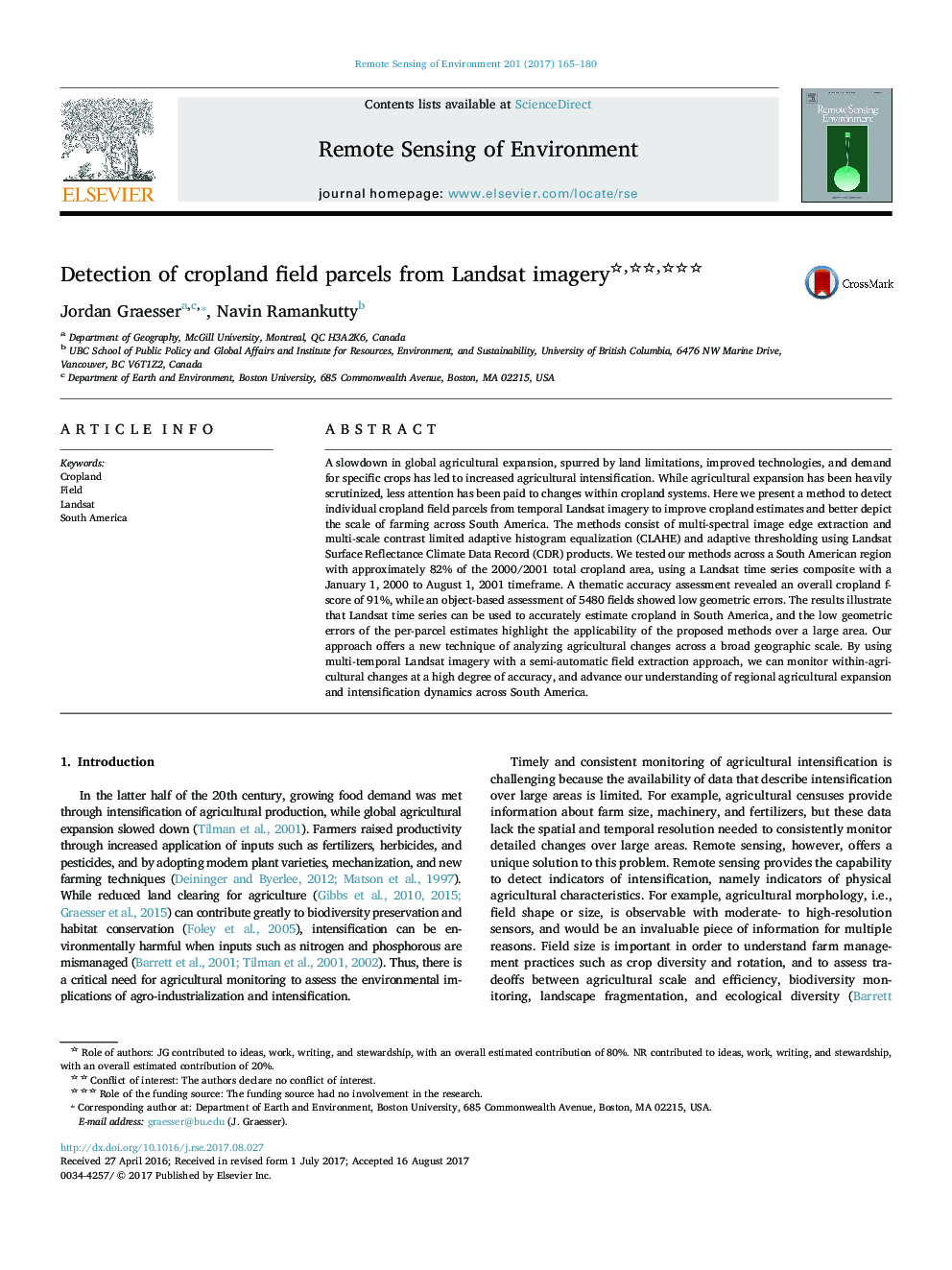| Article ID | Journal | Published Year | Pages | File Type |
|---|---|---|---|---|
| 5754663 | Remote Sensing of Environment | 2017 | 16 Pages |
Abstract
A slowdown in global agricultural expansion, spurred by land limitations, improved technologies, and demand for specific crops has led to increased agricultural intensification. While agricultural expansion has been heavily scrutinized, less attention has been paid to changes within cropland systems. Here we present a method to detect individual cropland field parcels from temporal Landsat imagery to improve cropland estimates and better depict the scale of farming across South America. The methods consist of multi-spectral image edge extraction and multi-scale contrast limited adaptive histogram equalization (CLAHE) and adaptive thresholding using Landsat Surface Reflectance Climate Data Record (CDR) products. We tested our methods across a South American region with approximately 82% of the 2000/2001 total cropland area, using a Landsat time series composite with a January 1, 2000 to August 1, 2001 timeframe. A thematic accuracy assessment revealed an overall cropland f-score of 91%, while an object-based assessment of 5480 fields showed low geometric errors. The results illustrate that Landsat time series can be used to accurately estimate cropland in South America, and the low geometric errors of the per-parcel estimates highlight the applicability of the proposed methods over a large area. Our approach offers a new technique of analyzing agricultural changes across a broad geographic scale. By using multi-temporal Landsat imagery with a semi-automatic field extraction approach, we can monitor within-agricultural changes at a high degree of accuracy, and advance our understanding of regional agricultural expansion and intensification dynamics across South America.
Keywords
Related Topics
Physical Sciences and Engineering
Earth and Planetary Sciences
Computers in Earth Sciences
Authors
Jordan Graesser, Navin Ramankutty,
